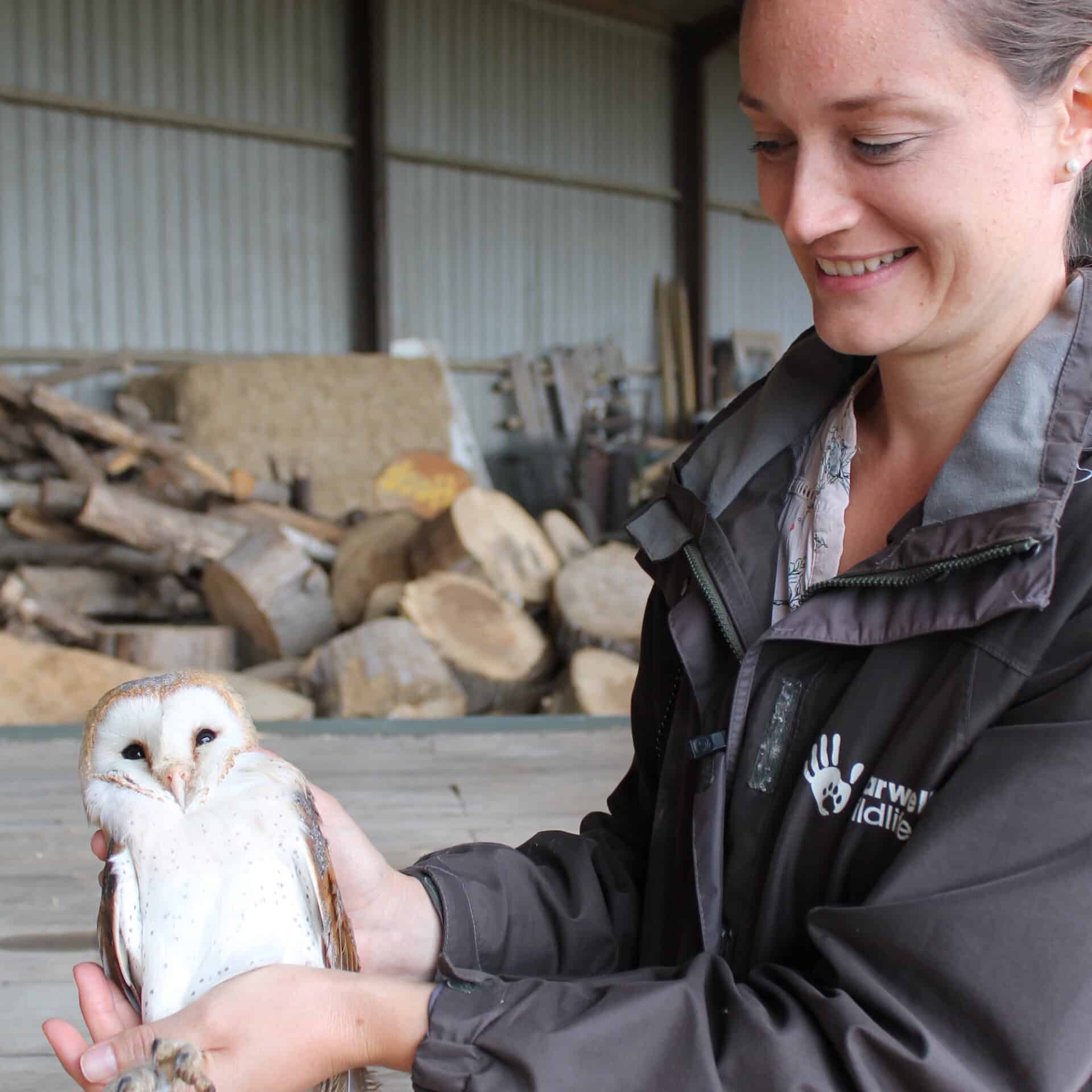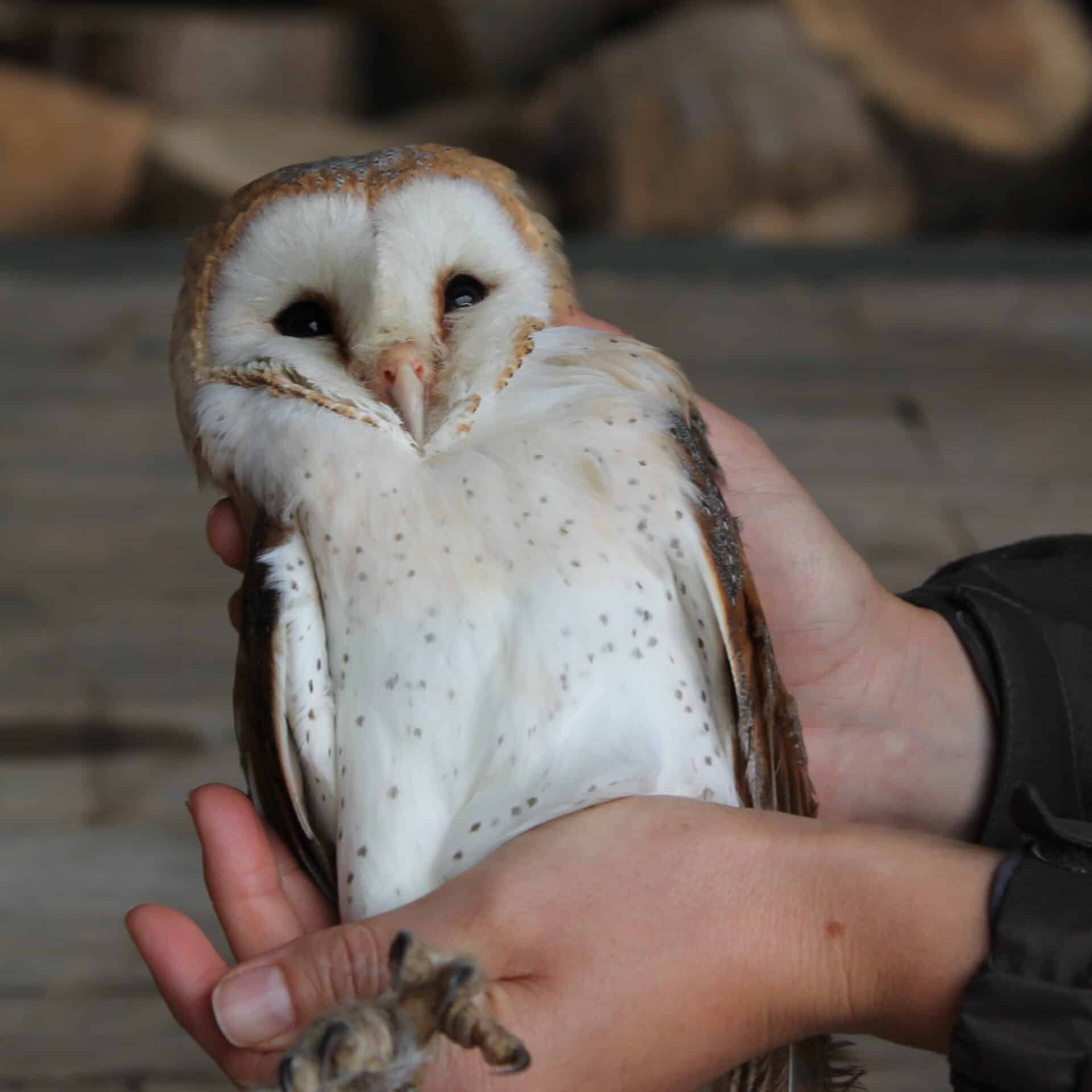Find out about our local conservation work with barn owls
July 29, 2020
July 29, 2020

The continuing efforts have resulted in lasting benefits to local wildlife, including populations of barn owl.
Earlier this month, we undertook the annual inspection of our barn owl boxes, working alongside the Hawk Conservancy Trust and the South Downs National Park Authority, to monitor breeding activity across our land. Despite a difficult year for these farmland birds, we again found individuals occupying home ranges within Marwell. Although barn owls have been recovering in numbers since the 1970s and 1980s, their populations are still affected by habitat loss, rodenticide use and road mortality. Maintaining rough grassland to increase prey availability, enhancing woodland edge habitats and creating nest sites can help support these iconic farmland birds, which are valuable indicators of wider ecosystem health.
The monitoring this year provided an opportunity to assess breeding activity, individual condition and to ring any new birds. A particularly striking female (pictured) was previously ringed as an owlet in 2017 and has returned to the same box in 2020. Although no chicks were found in the boxes, likely due to the poor weather we had in spring and reduced prey availability, the birds were maintaining good condition, weight and we are hopeful that we will see Marwell’s grasslands being utilised by hunting birds again next year.
Enhancing priority areas and restoring local wildlife communities continues to be a key part of Marwell’s conservation delivery and populations like the barn owl demonstrate the benefits of our local conservation work.
